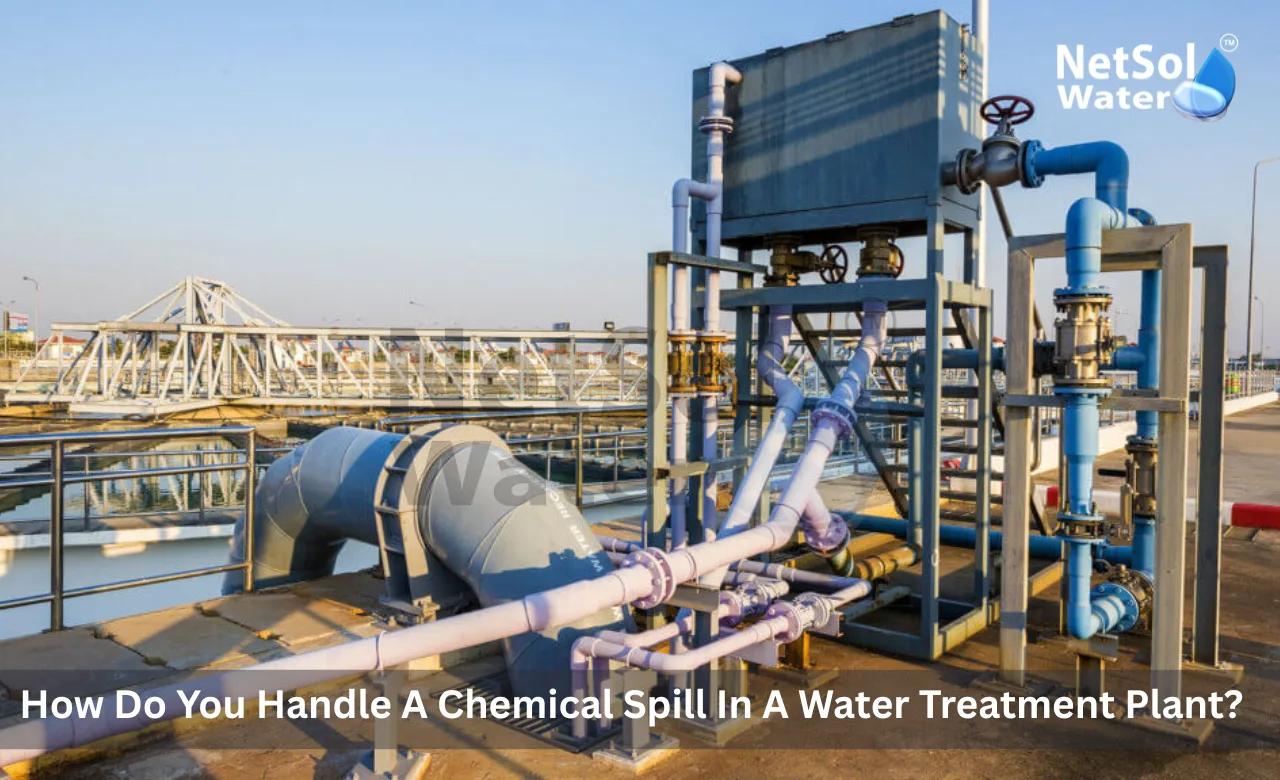
How Do You Handle A Chemical Spill In A Water Treatment Plant?
A water treatment plant keeps a city safe by turning raw water into clean water for homes and business. A chemical spill at a plant can harm people and damage equipment. Staff must act fast. The plant must protect supply and limit harm to the environment. Netsol Water is the leading Water Treatment Plant Manufacturer and it has seen how quick action keeps systems running and people safe.
Immediate Response and Safety Measures
Handling a chemical spill starts with people first. Protecting staff and visitors must come before any technical fix. Quick and calm action keeps harm low and keeps the plant running. Let us have a look on some actions that save lives and limit damage.
Staff Safety and Evacuation
When a spill happens staff must move away from the area that has the chemical. A trained senior person should direct the team. Call emergency services if the chemical poses risk beyond the plant. Use alarms to warn people. Check for injuries and give first aid when it is safe. Make sure all staff wear proper gear. This gear includes gloves, masks and eye protection that match the chemical hazard. If a person inhales fumes move them to fresh air right away. Stop any non essential work near the spill area. Clear the scene of extra people so responders can work without delay. Record who was present and who left. This record helps later when teams review what happened and when they plan training to prevent the same mistake.
Shut Down and Isolate Affected Systems
After staff safety the plant must stop flow to the damaged area. Turn off pumps and close valves that let water pass through the spill zone. This step keeps the chemical from spreading into filters and storage tanks. Label the affected pipes and equipment so no one opens them by mistake. Isolate electrical systems if the chemical conducts electricity or makes sparks likely. Use portable tanks to divert clean water away from the spill if needed. If the chemical can react with other substances keep it away from chlorine and acids. Operators should follow the plant spread sheet for hazardous chemicals. That sheet tells which valves to close and which neutralizing agents to use. Work with a safety officer to make sure the isolation steps do not harm other parts of the plant or the public water supply.
Containment and Cleanup Procedures
Stopping the spill from moving comes next. A controlled cleanup reduces waste and cuts cost for repair. Planning and clear methods make cleanup safe and effective. Let us have a look on some containment tools and cleanup steps that plants use.
Containment and Neutralization
Containment uses simple tools like barriers and absorbent pads. Place barriers downhill of the spill so the chemical cannot flow into drains. Use sand or specific absorbent materials that match the chemical type. For vapors use fans placed to move air away from work areas but not toward public spaces. If the chemical needs neutralizing use only a substance that suits it. Wrong neutralizers can cause heat or gas. Check the chemical data sheet before mixing anything. Collect the absorbed material into sealed drums that show the chemical name and hazard. Keep those drums in a safe zone until disposal staff arrive. The goal is to keep the chemical in one place and stop it from entering rivers or tanks.
Cleanup and Waste Disposal
Once the spill sits in sealed drums trained staff must clean the floor and the tools. Use scrubbers and approved cleaning agents. Rinse water can carry small amounts of chemical so capture rinse water and treat it as hazardous waste. Label all waste clearly with the date and the chemical involved. Arrange to move waste to a licensed disposal site. Do not mix wastes unless rules say it is safe. Keep copies of disposal records. These records show regulators that the plant followed rules. After cleanup inspect the equipment and test the water to confirm no chemical remains. Repair or replace any damaged parts before restarting systems. A clear checklist helps staff avoid missed steps and speeds the return to normal operations.
Read some interesting information for Sewage Treatment Plant Manufacturers
Conclusion
A clear plan makes a chemical spill easier to manage. The plan must protect people stop the spread and guide cleanup. It must also record each step so the plant learns and improves. Netsol Water is the leading Water Treatment Plant Manufacturer and it can help plants write a practical plan and train staff. A short visit and a simple plan can prevent a large problem later. Contact us to set up a review and to build a safe response path for your plant.
Contact Netsol Water at:
Phone: +91-9650608473
Email: enquiry@netsolwater.com
